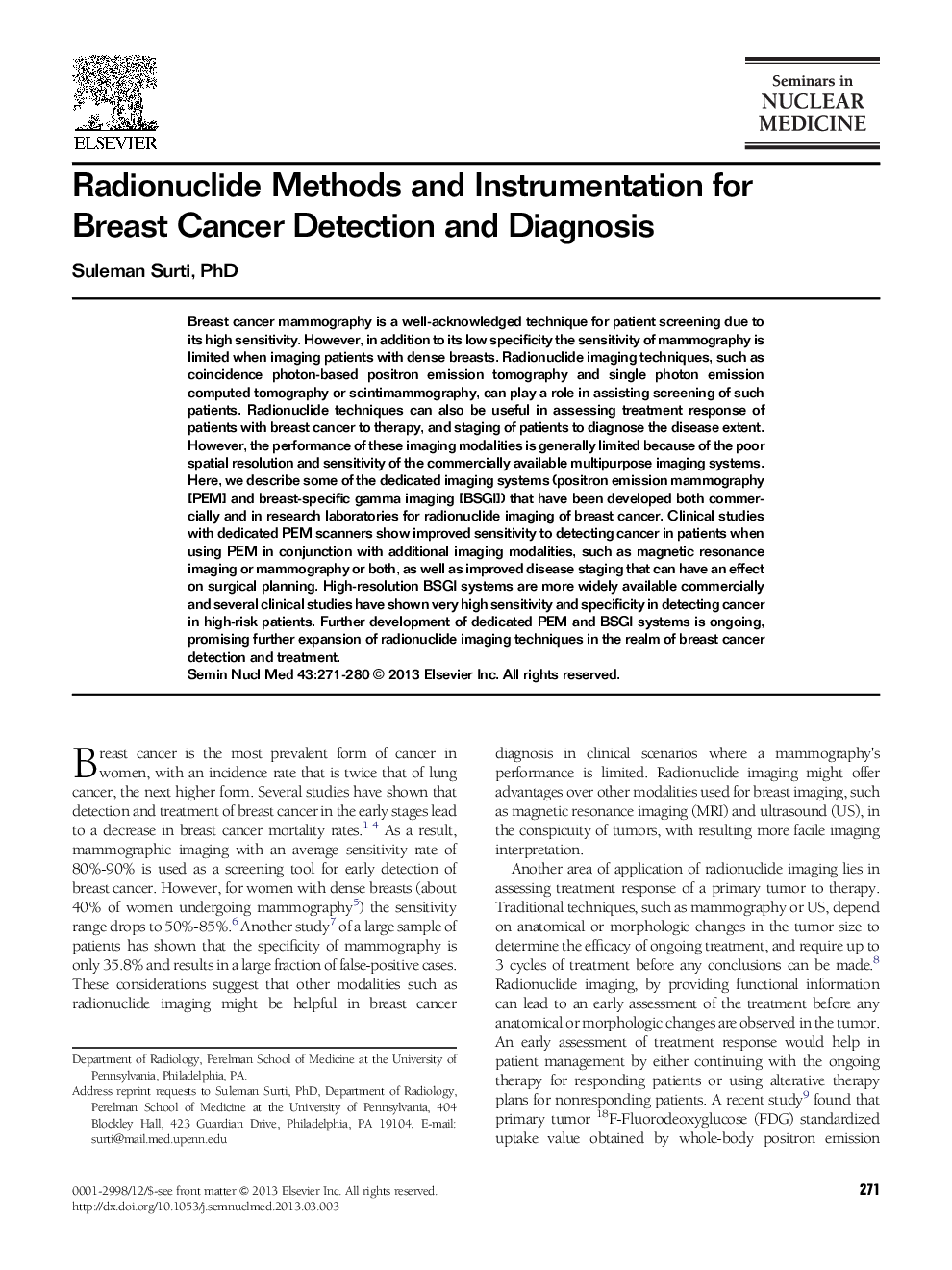| Article ID | Journal | Published Year | Pages | File Type |
|---|---|---|---|---|
| 4251103 | Seminars in Nuclear Medicine | 2013 | 10 Pages |
Breast cancer mammography is a well-acknowledged technique for patient screening due to its high sensitivity. However, in addition to its low specificity the sensitivity of mammography is limited when imaging patients with dense breasts. Radionuclide imaging techniques, such as coincidence photon-based positron emission tomography and single photon emission computed tomography or scintimammography, can play a role in assisting screening of such patients. Radionuclide techniques can also be useful in assessing treatment response of patients with breast cancer to therapy, and staging of patients to diagnose the disease extent. However, the performance of these imaging modalities is generally limited because of the poor spatial resolution and sensitivity of the commercially available multipurpose imaging systems. Here, we describe some of the dedicated imaging systems (positron emission mammography [PEM] and breast-specific gamma imaging [BSGI]) that have been developed both commercially and in research laboratories for radionuclide imaging of breast cancer. Clinical studies with dedicated PEM scanners show improved sensitivity to detecting cancer in patients when using PEM in conjunction with additional imaging modalities, such as magnetic resonance imaging or mammography or both, as well as improved disease staging that can have an effect on surgical planning. High-resolution BSGI systems are more widely available commercially and several clinical studies have shown very high sensitivity and specificity in detecting cancer in high-risk patients. Further development of dedicated PEM and BSGI systems is ongoing, promising further expansion of radionuclide imaging techniques in the realm of breast cancer detection and treatment.
